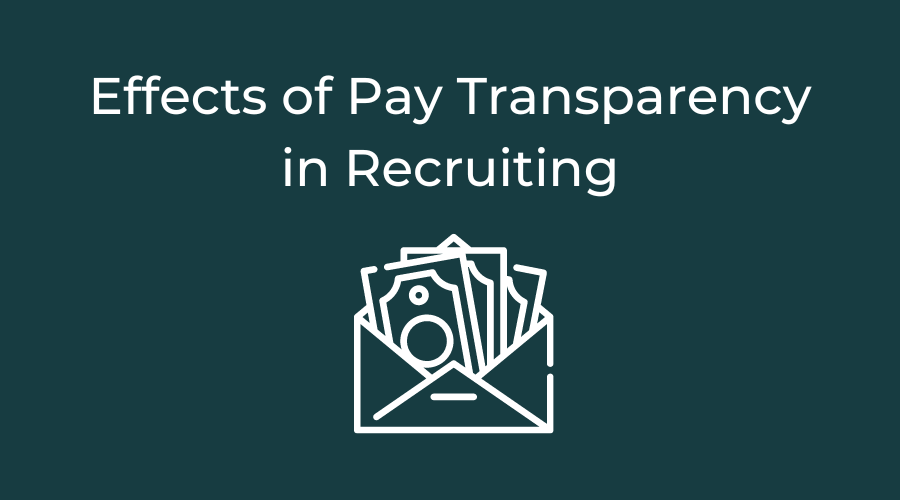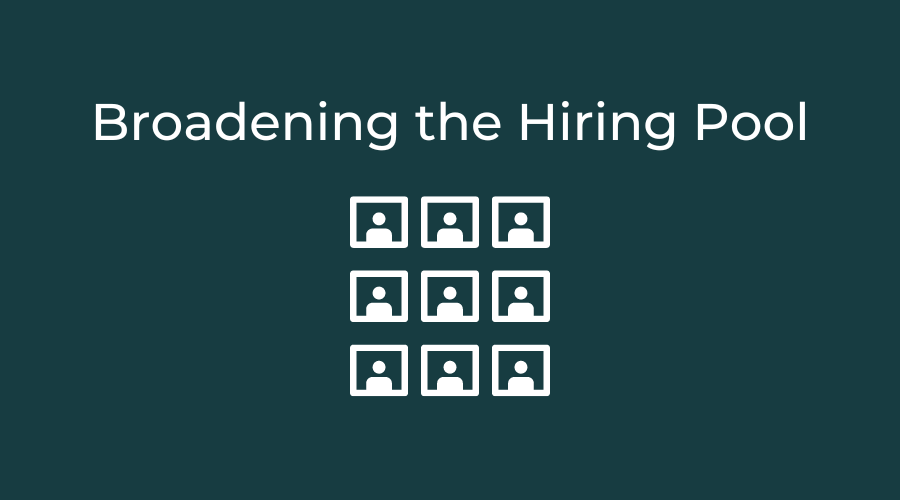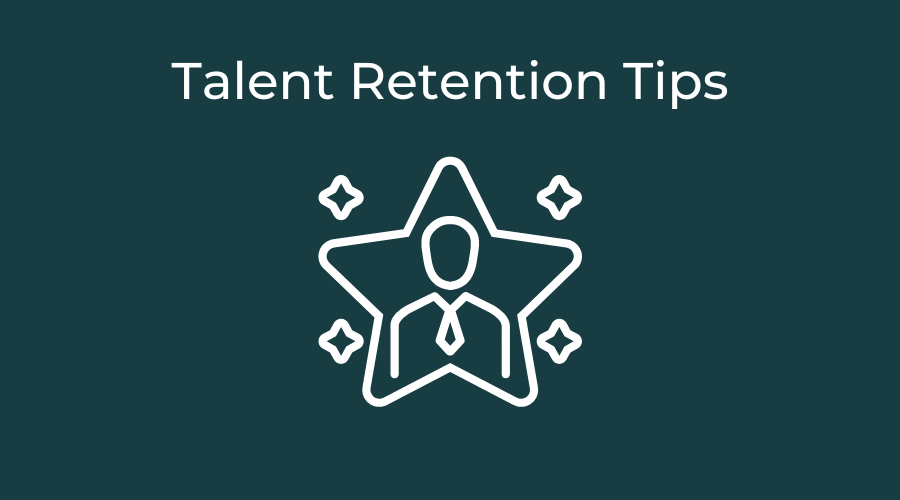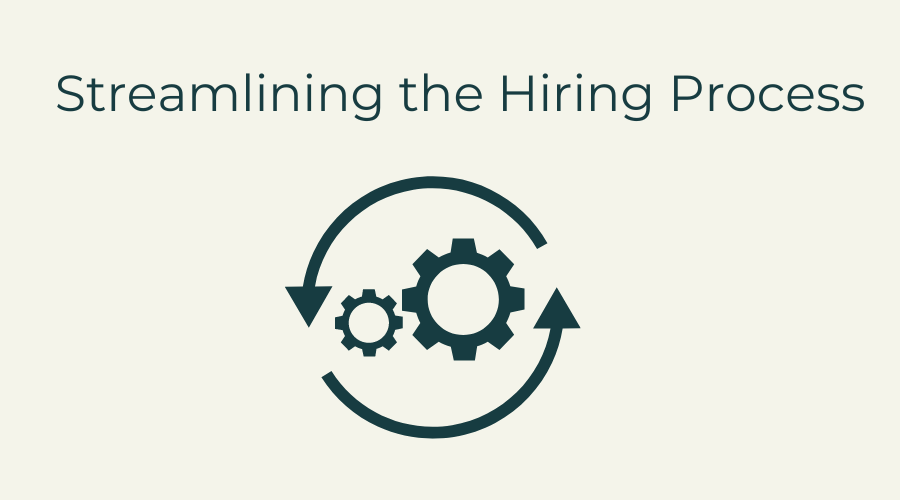Stephanie Mauney

Recruiting
Effects of Pay Transparency in Recruiting
With each month, more states are joining the trend of passing pay transparency laws. Primarily, these laws require job postings to include pay ranges publicly. As of January 1, 2023, Washington and California will join the fold, widening the number of employers responsible to pay transparency laws. With laws already passed and likely more legislation to come, employers need to consider how to be ready for changes in the law. Compliance with new regulations will help employers remain at low risk for future legal action. Employers outside of current pay transparency laws may consider reviewing their current policy and adopting an official approach to remain attractive to candidates in the current job market. One thing is true, all employers planning to implement a pay transparency policy need to consider the ramifications and construct a compliant plan. Identifying Gaps in Pay Employers facing pay transparency requirements must address existing salaries and examine gaps, considering how transparency could affect employee morale and sentiment. Employers should remember that employees discussing salary amongst themselves is considered protected activity. Executives may want to hire a compensation expert to conduct a pay audit. A subject matter expert from a non-biased third party could help identify where perceptions about unfair pay may lie. Following the identification of potentially unfair gaps, market benchmarking should be done for the positions. Understanding where the minimum, maximum, and mid pay range stands for the local job market assists in pointing to whether current employees are over, under, or averagely paid. Of course, other factors are at play and should be considered including tenure, skillset, and value to the organization when conducting a compensation review. Address Pay in Recruiting Process In a recent survey by Indeed, 75% percent of 1,500 job seekers say they would be more likely to apply for a job if the salary range was listed in the job posting. Depending on the state, there may be different requirements when it comes to pay transparency for job postings. Many states require employers to be transparent if a job seeker asks for salary information during the application process while others require it to be made clear in the job posting itself. Some states require additional information to be posted including benefits, retirement plant, bonus structure, and other company offered perks. Job seekers have the ability to be more selective now than ever before. As employers strategize on how to attract top candidates, they should consider how being transparent about pay will impact the candidate perception of the organization. Organizations providing clarity up front with salary ranges can send a powerful message about company culture and show equity as an important value. In today’s competitive market, showing candidates from the start of the hiring process that the company values treating employees fairly when it comes to pay not only widens the hiring pool, but it can result in longer tenure. Pay Transparency Communication is Key Keeping the doors of communication open when it comes to a new policies or changes to hiring practices is vital. In order to build trust with employees, share with them who will be affected, when changes are taking places, how decision were made, and why the change is occurring. Planning a communication strategy is often an after thought when it should be at the forefront. Employees headed towards disengagement, recently coined ‘quiet quitting’, often start down that path with some form of feeling distrust. When organizations trust their employees and communicate openly, their workforce is empowered to engage in a meaningful way. Stephanie Mauney is a freelance writer and content curator specializing in Human Resources
Continue readingStephanie Mauney

Recruiting
Broadening the Hiring Pool
The hiring pool is the group of candidates that become applicants for a job requisition. When the applicant pool is small, it can be challenging to find a quality hire out of limited options. Employers in the current strained market may often face that disappointing moment when following up on a recently posted high-priority position. The job has been published across a few job boards, on the company website, and shared on LinkedIn. All the typical sharing methods have been utilized, but applicants are not flooding in even after several days. Hiring managers may wonder how they can begin to attract a wider audience of qualified talent. There are a few ways in which employers can re-evaluate their hiring methods in order to engage a broader range of job seekers. Skills Based Hiring A transition to skills based hiring removes several barriers to candidates that do not meet minimum levels of education or years of experience. Learning to transition the mentality of hiring can be transformational for recruiting efforts. Thinking about what the job requires in terms of skills reaches candidates that are capable of completing all functions of the job, but don’t meet base level requirements leading to them being filtered out of applicants. For example, even a small change such as considering those who have a four year degree OR equivalent experience. This opens the jobs to all those who didn’t necessarily complete a bachelor’s degree, but have many years of well-developed experience making them qualified for the job. Hiring managers should also review potentially transferable skills that would allow for a star candidate to be successful in the role. Consider an exiting teacher as an example; they may be highly organized, detail-oriented, and have excellent high stress management skills-all extremely valuable skills for many types of jobs. Employers should analyze the core skillsets that meet the needs of functional job duties. Listing these skillsets opens up the position to those applicants looking to make a career transition Re-Evaluate Job Requirements Coupled with a transition to skills based hiring, organizations can expand the applicant pool by re-evaluating job requirements for technical skills, software knowledge, and certifications. Limiting applicants to those that hold advanced skillsets or particular certifications leaves candidates with untapped potential out of the pool. Are there ways to offer on the job training? Can candidates agree to complete courses or obtain certifications after starting? A candidate that meets 75% of the job requirements, but lacks one missing skill could hold long tenured potential, especially when realizing that the company is willing to make a longtime investment in their professional development. Offer Flexibility In today’s hiring world, remote and hybrid jobs are what almost every candidate is seeking. Of course, there are those trade, entertainment, service, and hospitality jobs that require in person work. Those employers must find other ways to offer flexibility. For those employers that are able, they should continue to review the ability to allow employees to work remotely. Offering a job remotely immediately widens the hiring pool extensively. Without geographical limitations, the number of potential candidates instantly expands exponentially. Offering the job regionally, nationally, or globally can have benefits in bringing not only more candidates, but a candidate pool of diverse applicants. Bringing diversity to the organization by drawing in employees from other cultures and areas has benefits that go well beyond successfully filling the role. Get the Word Out It is proven repeatedly that one of the best and most successful ways to fill an open role is with an internal referral. When employees refer their networks to the role, they come with an internal employee already vouching for their ability to do the job well. When traditional job boards, recruiters, or social media campaigns are not proving successful, employers should consider offering an employee referral bonus program. Encouraging already engaged employees to do recruiting within their own network can often draw in top talent. Employees hired from internal referrals tend to have longer than average tenure than the typical hire and are less expensive to hire. Broadening the hiring pool is a challenge. It can be difficult to get key leaders behind a change in the hiring procedure, but the benefits far outweigh the barriers. When competing with a competitive market within a low unemployment economy, it is vital for employers to get creative in hiring practices. Widening the candidate pool with these tips is one way to draw in additional resumes for consideration. Stephanie Mauney is a freelance writer and content curator specializing in Human Resources
Continue readingStephanie Mauney

Human Resources
Talent Retention Tips
Talent retention is at the heart of the great reset happening in today’s workplace. According to recent results from a study by Pew Research Center over the last year; Workers who changed jobs experienced a real increase of 9.7% or more over their pay a year earlier. Meanwhile, the median worker who remained in the same job experienced a loss of 1.7%. Another survey by Gartner suggests the coming days may see an increase in turnover by up to 50-75%. What does this mean for employers facing a competitive job market? It means those who want to see top performers stay on for the long haul must focus on talent retention. How can human resource professionals form a successful talent retention strategy? Show Them the Money It is vital for HR professionals to understand how they bring value to their organization. Low talent retention is costly. High turnover ultimately leads to lost revenue as positions remain open due to it becoming increasingly difficult to attract talent. Pressure to fill open positions can cause hires to be made hastily that do not meet the desired standard of quality leading to low performance. Through well documented analytics hiring leaders should demonstrate to business decision makers the vitality of focusing on talent retention and the ultimate negative trickle-down effect of not doing so. Identify Gaps in Satisfaction In order to form a successful talent retention strategy, an analysis of where dissatisfaction stems from is a necessary first step. Identifying gaps in job satisfaction requires getting employees to be honest. Regularly scheduled anonymous employee surveys or conducting stay interviews are potential ways to identify dissatisfaction early on. Exit interviews often provide the most telling information about where gaps in satisfaction are occurring with current employees. It is not likely that exiting employees with complaints are unique in their perceptions. The key to making information gathered about employee dissatisfaction matter is what happens following the identification. If no change occurs, it was a moot point. Action should always follow identification. Open Communication Employees want to see transparency from their organization. Keeping an open line of communication with employees can go long way in making them feel a valued member of the company. This could come in many forms including conversations between managers and direct reports, updates from the CEO, or maintaining financial transparency. One important way to keep communication with employees open is to have talks with employees about career goals. Employees may have ambitions the employer has no idea about. Opening these conversations lead to the possibility for professional development and the potential for employees to see where their career trajectory leads. Building Community Employees want to work somewhere that not only gives a sense of purpose and a hope for professional growth, but, as all people seek, a feeling of belongingness. The occasional pizza party or hosting food trucks in the parking lot do not cut it anymore when it comes to impressing employees or building a positive culture. Creating socialization opportunities for not only tenured employees, but also new hires is important. Helping new hires learn the company through connection and being embedded into the company culture builds that feeling of belonging and purpose that keeps people at a job long term. Evaluating Pay and Benefits When employees can leave to a competitor for a 10% salary increase at minimum, it should be obvious that pay and benefits cannot be overlooked in a talent retention strategy. Evaluating average and top level benefits, even those that may seem non-traditional, can be what sets apart an organization. Benchmarking current pay grades helps keep track on where the market stands. It may take a compensation re-structure in order to maintain levels with current market trends. Being at least average, but preferably above average in pay and benefits could be considered one of the most important ways to retain talent. Consider hiring a Employee Retention Specialist With the long list of existing duties and the day -to-day responsibilities, focusing on specialized talent retention projects may not be in the bandwidth of current staff. A rising trend for employers is to hire a staff member dedicated to retaining staff. If hiring for such a role can be worked into the budget, the payoff could be exponential. Employers face a difficult reality when it comes to retaining talent amidst a competitive market. It’s going to take a mindset shift for many organizations to make the changes necessary to keep top talent from leaving for the next best opportunity, but it can be done. Stephanie Mauney is a freelance writer and content curator specializing in Human Resources
Continue readingStephanie Mauney

Recruiting
Streamlining the Hiring Process
The HR world is abuzz about bringing transformation to employment starting with the hiring process. Check any well-known recruiter’s social media space, and you’re sure to find their take on how companies can treat candidates better. It’s popular right now to take a stand for the unemployed searching for work and declare the hiring process be turned upside down. Is this a just another talking point trending, or is there really some change to be had? What does a quality hiring method look like, and why is it important? An employer’s hiring process is the first glimpse into the organization for every applicant. The hiring process can be the driving factor pushing a unicorn candidate to choose one company over another. With less positive outcomes, hiring methodologies can also have legal implications and lead to future legal action if the wrong steps are taken, not to mention the potential for negative media and public damage. Examining a few questions and answers about a quality hiring process may be helpful in grabbing the attention of that unicorn candidate, preventing negative publicity, and avoiding legal risk. Streamline the Amount of Interviews Many companies or hiring managers do not come to the job market prepared with a set of applicant steps. This can create confusion on the part of both interviewers and candidates throughout the applicant search. It is critical to be able to prepare applicants with clear expectations and time commitments through the hiring process. Typical entry and mid-level jobs may require 2-3 interviews including an initial phone screen. For high level or C-suite positions, additional screening is expected and may include up to 4-5 meetings throughout the process. Keeping the interview process dragging for weeks or months on end and requiring meetings with unnecessary parties may turn candidates off from an organization. Additionally, this makes the hiring department appear unorganized and likely sends a huge red flag to applicants. Can sample work be requested of candidates? Asking candidates to submit small assignment or drafts during the interview process is allowable, but it should be kept to the latter end of the hiring process. Anyone being asked to submit their own work as part of the hiring process should be in the top tier of applicant being considered for hire. The work should be of a small scale and not consume too much of the applicant’s time. Any work submitted from the candidate could not be used by the company itself. Requiring an employee to complete a working interview is also allowable, but candidates should abide by all employment laws and be compensated for any time worked. How often should communication happen? Companies in this day and time do not want to gain a reputation of ghosting candidates. It is vital that the hiring team maintain consistent communication with candidates, both those moving forward in the process, and those being passed on. Communication, positive and negative news, shows the company and hiring team to be not only organized, but also empathetic. Candidates searching for work are depending on communication from the companies they interview with as they make difficult decisions about their future career. Even if a stall in hiring must occur, it’s important to be honest with candidates about the stagnant state. The open communication style can also be advantageous to the employer as applicants may share additional information about the status of their job search that could influence how quickly the process should be moving. To maintain consistency, companies may consider establishing a standard template for the candidates that don’t get hired. Consistency, although leaving room for catering slightly to each person if applicable, may mitigate any risk of potential accusations of discrimination in the hiring process. What to avoid in the hiring process? In order to avoid making a legal error, hiring managers and anyone interviewing candidates should be trained on what is and is not ok during the hiring process. All interview questions should be kept relevant to the job duties. Candidates should never be required to answer questions about anything pertaining to their personal life, appearance, or skillsets unrelated to the job. Keeping managers and interviewers up to date on discrimination training will go a long way in avoiding future legal missteps in the hiring process. Transforming the hiring process is not going to change overnight, but there are small and simple steps companies can take to ensure every candidate is being given a fair and positive application experience. Avoiding legal mistakes, keeping open communication, limiting interviews and sample work to reasonable requirements all will help employers be a part of the hiring transformation, making hiring more equitable for all. Stephanie Mauney is a freelance writer and content curator specializing in Human Resources
Continue readingStephanie Mauney

Recruitment Marketing
What's an Employer Value Proposition?
Within today’s job market, getting creative with hiring solutions is more important than ever. An employee value proposition, EVP, is one tool employers can use to stand out from competition in attracting top talent to their organization. Gone are the days where simple promises of growth or the highest salary wins over the in-demand candidate. Rather, employers must present a comprehensive package that stands out amongst companies lined up ready to hire. According to Gartner, a technological research and consulting firm, an Employee Value Proposition is “the set of attributes that the labor market and current employees perceive as the value they gain through employment with the organization.” A well-developed EVP displays to a potential candidate not only the financial rewards being offered, but also the professional development opportunities, unique company benefits, or values and vision of the organization. An EVP may come in many forms such as a statement included in job ads, a video shared from company social media platforms, or one-pager shared with new employees. Regardless of the form it is delivered in, a successful EVP is one that company recruiters know well and is easily communicated to candidates. Every EVP should include certain elements that create a comprehensive view into the unique worth a company offers its employees. The EVP may be wrapped up in a share-worthy tagline, but almost always expands on several key components. Compensation The explanation of compensation in an EVP could include the company compensation strategy, system for raises and promotions, current employee compensation satisfaction, employee review procedures, and market comparisons. Benefits Benefits shared in an EVP should detail the basic medical, dental, and vision that is expected as standard and whether any percentage of premiums are covered by the employer. In addition to these basics, the company should share about their time off policies, retirement benefits, employee assistance programs, holidays offered, family leave, and any other perks included in total compensation. Forward thinking employees are always going to be considering the whole package, and one additional incentive may be the difference in being the employer of choice. Professional Development How is the company investing in its future by making employee growth a priority? Employees want to be re-assured that loyalty is not a one-way street when it comes to employment. Sharing how the organization invests in its employee’s growth can be a strategic differentiator in the market. Consider sharing whether the organization provides education reimbursement, professional networking opportunities, career planning, or training for advancement opportunities. Candidates want to know how their future work will be evaluated and how feedback will be provided. Work-Life Work life in an EVP clues candidates into what day-to-day values are prioritized in the company. Nike expresses their values in a EVP slogan, “win as a team.” Nike wants candidates to know they are a company who values working together to the make the world better through their products and services. Google claims to “build, design, code, create—for everyone.” They want to cultivate a diverse network of employees to join the ‘Googler’ team. Maybe the organization allows flexible work hours, advocates for clear work-life boundaries, or encourages healthy lifestyles; these are all important to share in an EVP. Finding creative ways to share the values the organization is focused on can help a company stand out and draw in candidates who feel aligned similarly. Culture An EVP could include a focus on company culture. Perhaps share that a vision of collaboration or company communication is a current emphasis. Answering what leadership style is prevalent could be a huge factor in candidate perspective. What efforts is the company making to create change via social or environmental responsibility? Employee value propositions can be a unique tool to foster buzz amidst both active and passive candidates. Companies can incorporate crafting an EVP during the annual goal setting process. By identifying not only company goals, but also ideal candidate traits, the organizational leadership can perform a gap analysis to pinpoint focal points. After creating the EVP from current goals, employers can initiate a roll out by defining where and how the EVP will be advertised to gain the best results. EVP’s should be evaluated on a yearly basis to ensure alignment with the everchanging and up-to-date company vision. Stephanie Mauney is a freelance writer and content curator specializing in Human Resources
Continue readingStephanie Mauney

Human Resources
Getting Workers to Return to the Office
One of the hottest topics in today’s conversation about company culture and hiring is the ever so dreaded, return to the office. Employers seem to be faced with the impossible. Over the last two and a half years companies have overcome the unprecedented and been forced to reconcile the future of their workforce. Many continuously pushed back return to office dates as the Covid-19 pandemic stretched longer than most of us imagined was possible until they ultimately chose to transfer their companies to remote offices permanently. The ‘return to the office’ conversation has spiked high emotions amongst leaders, employees, and those searching for work. One only must turn to a quick Twitter or LinkedIn search to find a few viral posts encouraging workers to stand strong in their remote work convictions. This post from Adam Grant inspired by a recent episode of his podcast, “WorkLife with Adam Grant”, received nearly 135,000 LinkedIn reactions and over 9,500 shares: You don’t need people in the office every day. The evidence is clear: hybrid work boosts productivity, creativity, well-being, & retention. Great collaborations don’t involve constant contact. They alternate between deep work and bursts of interaction. In an email to his employees, Elon Musk wrote passionately about requiring Tesla workers to return the office with a 40 hour in office minimum citing the need for corporate employees to be held to the same standard as his manufacturing units. Public response fell on a spectrum somewhere between understandingly sympathetic and complete outrage. It seems evident that opinions vary widely across the workforce. With such broadly diverse perspectives, it may be difficult for employers to navigate the right return to work rhetoric and requirements. Those with the flexibility to offer fully remote or hybrid opportunities now suddenly have a competitive edge in the hiring market. Employers wanting to require employees back in the office are up against a challenging reality. According to this year’s “People at Work 2022: A Global Workforce View” report from ADP Research Institute, “Two thirds (64%) of the workforce would consider looking for a new job if they were required to return to the office full time.” This begs the question; how can employers encourage a return to work without outrage and losing over half of the workforce? What makes a return to office requirement smooth and widely accepted? The answer is complicated. No return-to-work requirement at this point following the pandemic is going to be without its losses. There are bound to be those who simply are not ready to let go of remote life and will consider other employers. But there are ways to incentivize employees and create a positive conversation within an organization. Communication and posture are everything. Making hasty demands will not likely be taken well. Here’s a few suggestions to employers ready to bring employees back to the office: Empathy is key. Be careful to listen to employees and their needs post pandemic. Their world was uprooted, and needs have likely changed since they last commuted to work everyday for a 9-5. Consider putting out a company survey about how the organization can meet their needs as a return to the office occurs. Is a change in work environment needed? Does the physical workspace need an upgrade? Some employers are changing their physical environments to make the workspace more enticing to employees. Employees are no longer keen on the bland, windowless, cubicle environment. How can the physical workspace be altered to accommodate them? Designs including open spaces, plants, welcoming art, amenities, and good lights go a long way in improving making a workplace appear more welcoming. Flexibility could entice employees to get behind a return to office plan. Is offering flexible hours an option for the workplace? Can a more casual workplace dress code be allowed? Are there additional benefits like an Employee Assistance Program, childcare relief, or commuting allowances that could be offered? Is a hybrid model a possibility for the employees? Perhaps, even allowing Fridays from home could be the key to showing goodwill from organization leaders. Many companies have found success in creating a compromise by allowing employees to keep some work from home days. Those roll out of bed, grab the coffee, and throw on a work shirt mornings have become treasured in the minds of employees. Even one remaining at home day may be the flexibility needed to keep employees happy with a return to the office. Other ideas include a transportation reimbursement, free food, company sponsored pet walkers, or even moving to a 4 day workweek. Whatever you decide to do, its clear the new way of work will require more creative solutions to get them to come back. Stephanie Mauney is a freelance writer and content curator specializing in Human Resources
Continue readingStephanie Mauney

Recruiting
Why Talent Acquisition is Important
Companies globally are experiencing the impact of ‘the Great Resignation’ and many are failing to meet the challenge of hiring in the competitive job market current economic conditions have them in. Turnover is on the rise as employees catch wind of higher wages, remote work opportunities, and confidence to go after jobs that go above the basic benefits package. Candidates are looking for companies that present a comprehensive experience for them. With these circumstances, businesses are seeking out strategies to stay competitive, retain staff, and hire top talent. Talent acquisition teams are the answer to this problem. Talent acquisition teams should be viewed as integral business partners for any organization looking to make people a priority. As a company plans to scale growth in revenue, increased talent needs to follow, and often does so in budget-approved waves. With a comprehensive approach to growing teams, employers can utilize talent acquisition departments to recruit candidates that bring assets beyond just the minimum required skills. There are several ways that successful talent acquisition teams bring value to an organization. Brand Awareness Big name brand companies get their world wide popularity from their people. Companies with focused talent acquisition strategies add value to a company by providing positive brand awareness. When TA teams have business related goals, values, and visions in mind they are able to effectively communicate the meaning of a company’s brand to every candidate they encounter. Whether a candidate moves to the final stage of hiring or not, smart companies will focus on TA teams that leave every candidate with a positive story to tell. In many industries, networking and hearsay about a companies hiring practices can make or break the future of recruitment. Being sure to have a resilient talent acquisition team can make all the difference in becoming the more attractive employer in the market. Strategic Success Organizational leadership must understand the connection between company success and strategic hiring. Every hire brings to a company a quantifiable value both via tangible and intangible metrics. Leaders in talent acquisition are there to help business decision makers understand those values. Companies must define what specific value they are looking for in a high quality hire. When managers and supervisors make that connection with their talent acquisition team for not only high level positions, but positions throughout the business, hiring can become deeper than looking for the person with the right years of experience. Companies should be helping recruiters answer the question, ‘how will this position ultimately affect the bottom line?’ This will result in new hires coming onboard that know the answer to that question from the start, creating employee engagement and investment from an early stage. Hiring Efficiency Hiring, firing, re-hiring, re-training, and recruiting are extremely expensive business costs. When companies are not investing in a quality talent acquisition team, recruiting and hiring become inefficient. Inefficient hiring leads to additional training and employee turnover. When positions are not filled with high quality candidates and engaged employees, the business suffers. Without quality recruiting and efficient onboarding procedures, most companies will get stuck in cycle of unending turnover leading ultimately to high costs, burdens on existing staff, and frustrations from managers. In order to improve this cycle, talent acquisition must be a valued focus. This means not only having a TA team, but bringing them into the decision making process and partnering with them on business objectives. Talent Analysis Creating high quality hiring strategies and efficient recruitment procedures requires understanding where the gap lies in current conditions and the ideal goal. Talent acquisition teams often have access, or should be provided with acces, to tools that can provide important analytics for the organization. What is the current time to fill? What is the requisition to recruiter ratio on average? What percent of turnover is happening with new hires? Is turnover primarily with tenured employees? How prepared do new employees feel to do the job after the training period? Are expectations laid out in the hiring process to candidates meeting the reality of what happens on the job? Answers to these questions can be provided by a TA team and may be the accelerant to making positive change. Without a team able to advise of where gaps lie, it is extremely difficult to make changes that steer the company in right direction. Stephanie Mauney is a freelance writer and content curator specializing in Human Resources
Continue readingStephanie Mauney

Recruiting
Hiring Manager Relationships
Recruiters and hiring managers do not always have a united vision when it comes to hiring practices. I’d go as far as to say that the relationship between them can often be strained. This can be seen posted all over recruiter-focused social media. I sought out a couple of social platforms to see exactly how recruiters are perceiving current industry relationships with their hiring managers. This video from viral HR Tik-Tok content creator, Nikki Jazz, shows the utter frustration of miscommunication between a recruiter and hiring managers concerning compensation negotiations. Nikki pokes fun at the amount of convincing it takes for a manager to increase pay to market level. When asked how to collaborate with and build a healthy relationship with hiring managers LinkedIn influencer and recruiter Dan Roth suggests, “wine and wine.” Of course, Dan is making a joke, but the underlining message is clear. It’s often difficult to work with them, leading to the occasional friendly bribe. Although many recruiters use their social platforms as comic relief, at the core, the majority of both internal and external recruiters desire to build long-lasting rapport with hiring managers to work in partnership on hiring successfully. Alexander Tsokos, Recruitment Business Partner at Adyen, suggests creating a mutually agreed upon written list of expectations initially to begin a healthy relationship from the start of a partnership with a hiring manager. Kristi Moose, a Client Success Manager for TalenTrust, says that she finds it helpful to meet with managers off-site and focus on making a genuine connection outside of operations. It’s important to keep in mind that both the recruiter and hiring manager likely have the same end goal. They want to meet company objectives by bringing on top talent and securing candidates who will convert into tenured employees. There are a few practical ways that recruiters can successfully partner with hiring managers. Building the Hiring Manager Relationship The first step to working well with a hiring manager is building a positive relationship. Both internal and external recruiters should understand that human connection often holds a priceless value in terms of meeting professional goals. Having strong relationships with hiring managers means effective communication, candid conversation, and efficient hiring can happen seamlessly. One way to build a positive relationship is to find ways to connect personally. Do you have any mutual interests? Are you living in a similar life stage? Perhaps plan a quarterly or bi-yearly lunch to step away from the stress of operations and have a planning meeting that can include a personal connection as well. Clarity of Expectations Nearly all strained relationships stem from miscommunicated expectations. Treat your relationship with your hiring manager like a marriage. If an expectation is not communicated clearly in writing or out loud, do not have hope that there will be follow-through. Before beginning a new relationship with a hiring manager take time to discuss a realistic workload and the effects of the number of requisitions on turnaround time. Pull up analytics that shows time to fill and retention. Ask if the hiring manager is satisfied. Talk about the exact type of candidate they are seeking including the experience, education, and skills that are required for the job. Ask where their perfect candidate might be working right now. Creating clear expectations with hiring managers will certainly make strong headway for future hiring success. Training Hiring Managers If open to the idea, hiring managers may need training in proper and legally compliant hiring practices. Providing reasoning and legal repercussions can give hiring managers context for the requirements behind protocols. Not all hiring managers may understand the intricacies of Affirmative Action, document retention, remaining unbiased, and compensation policy. For instance, to attract the perfect candidate, hiring managers may be willing to go above and beyond in offering a lucrative compensation package, but the internal recruiter may have to explain the repercussions of wage compression fur current tenured employees. Hiring managers should also be properly trained in the expected interview process and the importance of having an efficient process for the candidate as well as consistent interview questions. Have a conversation about how many interviews are appropriate for the hiring process, the importance of maintaining consistent communication with candidates, and being open to transferable skills. The potential for recruiters to build strong relationships with hiring managers is hanging on the ability of the recruiter to connect well and communicate effectively. The positive outcome of crafting and sustaining that relationship is well worth it. Give these tactics a try and see if you can turn around a strained relationship. Stephanie Mauney is a freelance writer and content curator specializing in Human Resources.
Continue readingStephanie Mauney

Recruiting
The Recruiter Experience
Internal talent acquisition teams are often the fuel for the success of any business by being the source who brings the strongest employee talent to the organization. Employers must know how to support and manage an internal recruiting team by optimizing their abilities and leveraging their strengths. This is called the recruiter experience and it should be an ongoing focus of talent leaders. Full-time recruiting day in and day out can be a tough job. Recruiters are often faced with last-minute rejection, no-shows, pressure to fill many roles at a time, and the stresses of a tight labor market. There are several ways employers can strategically support their talent acquisition team. Provide the Necessary Tools Recruiters must have access to the best technology the industry has to offer to match competitors. To effectively capture the attention of both seeking and passive candidates, recruiters need to be utilizing many forms of technology. Companies should provide them with access to some or all of the following; social media platform visibility, a well-run applicant tracking system preferably with integrated AI technology, mobile reaching software, video operated pre-screening tools, talent pool marketing via Candidate Relationship Management, and analytic tools to verify success factors. Being equipped with state-of-the-art technology aids recruiting teams by increasing their effectiveness and benefits the organization by ultimately reducing the cost of being short-staffed and decreasing time-to-fill. Recruiter Experience Means Ongoing Training Internal recruiting teams need ongoing training to be well educated in current trends and industry standards. It may be valuable to provide recruiters with marketing training. They could advance their skills in creating eye-catching job descriptions, high-quality employer branding materials, and wide-reaching job advertisements. Additionally, talent acquisition teams are the first touchpoint for candidates to the organization. They may require training on how to remain unbiased, recognize valuable transferable skills, and create a diverse candidate pool. Maintaining and growing these skills will aid the organization when the recruiter can bring the top of the market and diverse applicants to the hiring team. Empower Your Recruiters Being able to source for a wide range of job requisitions and have a consistent candidate pipeline to pull from often largely stems from access to a broad network of connections. Providing a recruiter with networking opportunities within the industry could be beneficial in creating those crucial connections. Companies could sponsor talent acquisition teams to attend a local chapter meeting of professionals, travel to industry conferences, or even host a regional networking event. Realistic Workload Every company has unique needs and varying requirements for its job requisitions. Keeping a realistic number of jobs to fill per recruiter is an important factor in maintaining job satisfaction for the talent acquisition team. There are many metrics that companies can use to analyze the number of requisitions an individual recruiter can efficiently carry at a time. An organization needs to assess outside factors such as the current labor market, industry competition, and candidate availability. Internal metrics such as average time-to-fill, number of members on the team, acceptance rate, hiring urgency, responsiveness by hiring managers, and cost per hire can all help decipher the appropriate number of job requisitions per recruiter for specific departments. Connecting to Business Objectives To retain an engaged talent acquisition workforce, all employees of the recruiting team must understand how their job works to achieve the goals and objectives of the organization. Recruiters with business acumen can effectively communicate how both their position and the positions they are working to fill help the organization succeed and contribute to the bottom-line revenue. Talent acquisition teams should be familiar with employer branding. Communicating the company culture, CSR initiatives, long-term goals, benefits packages, and overall business tone is critical to successful hiring and onboarding. Providing opportunities for recruiters to be involved in understanding marketing strategies would be beneficial. Team Building Lastly, talent acquisition team leadership must cultivate a culture of team mindset amidst their recruiters. To be the most effective possible, internal recruiters should be able to work together effectively and step into each other’s roles to fill the gap if necessary. The best teams are consistently led by servant leaders who understand the value of everyone as well as the importance of a collaborative work environment. The workload for talent acquisition teams can often be variable throughout seasons of market difficulty or high turnover, but preserving a united group effort can go a long way in taking the team to the next level. Your recruiter experience can be an attraction tool for top recruiting talent. Recruiters gossip a lot in their inner circles and if you aren’t prepared to empower their work, they will look elsewhere. Stephanie Mauney is a freelance writer and content curator specializing in Human Resources.
Continue readingStephanie Mauney
About Emissary
Emissary is a candidate engagement platform built to empower recruiters with efficient, modern communication tools that work in harmony with other recruiting solutions.
Stay in the loop!
Subscribe to our bi-weekly newsletter and keep up to date with the latest Recruiting and HR tips and trends.
By clicking send you’ll receive occasional emails from us.
